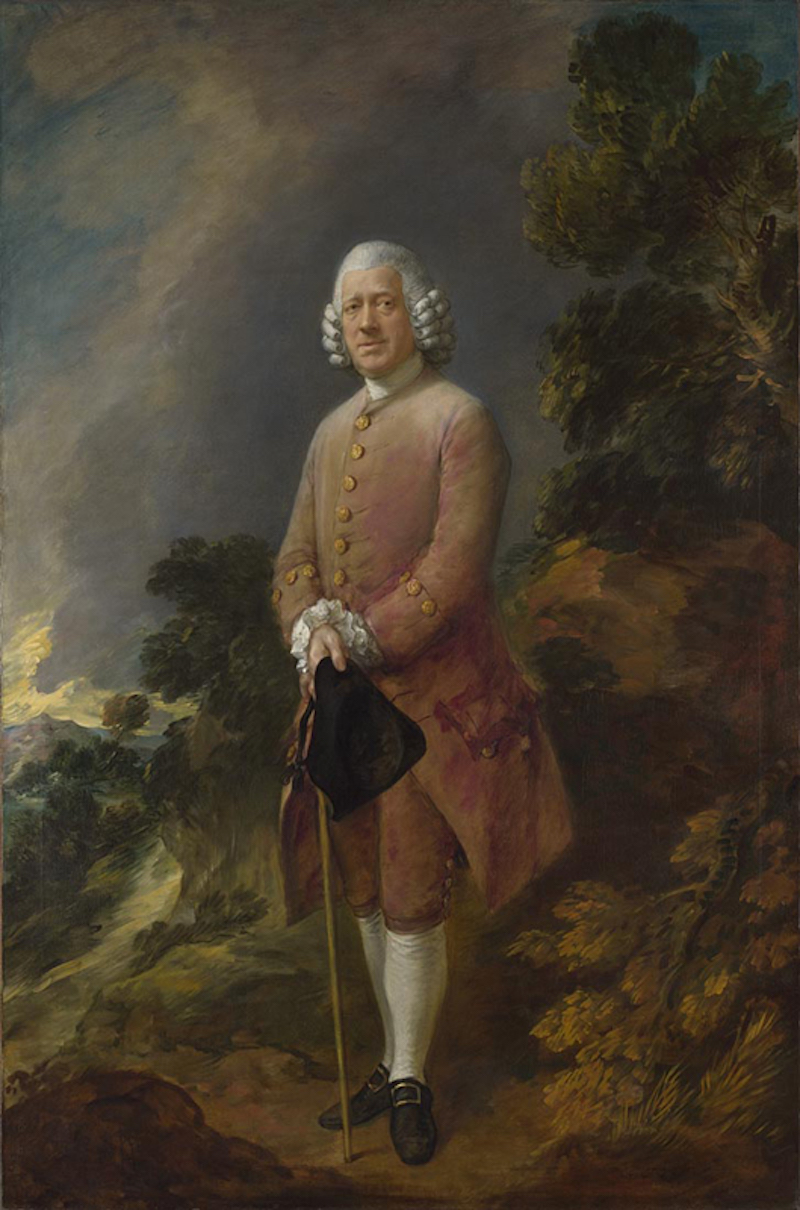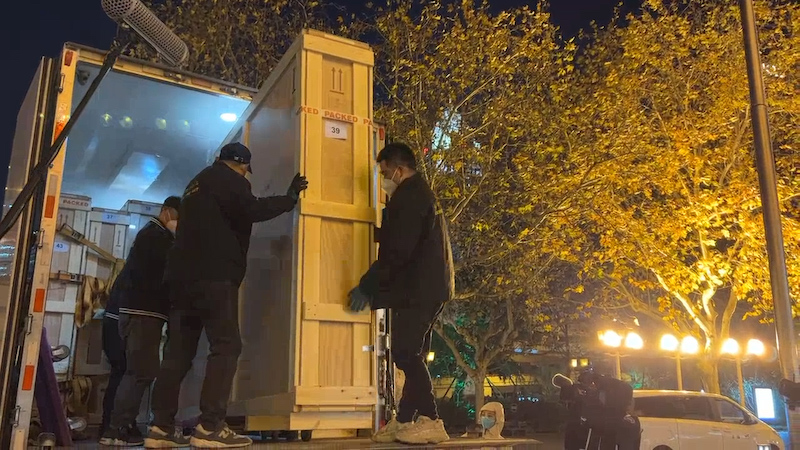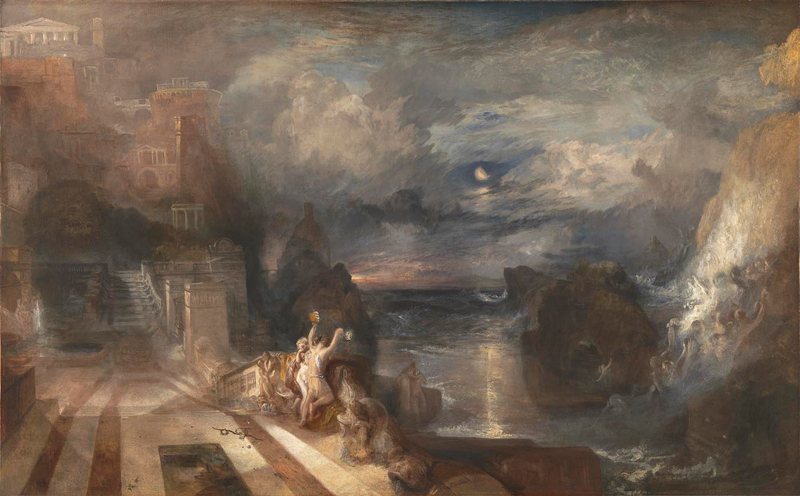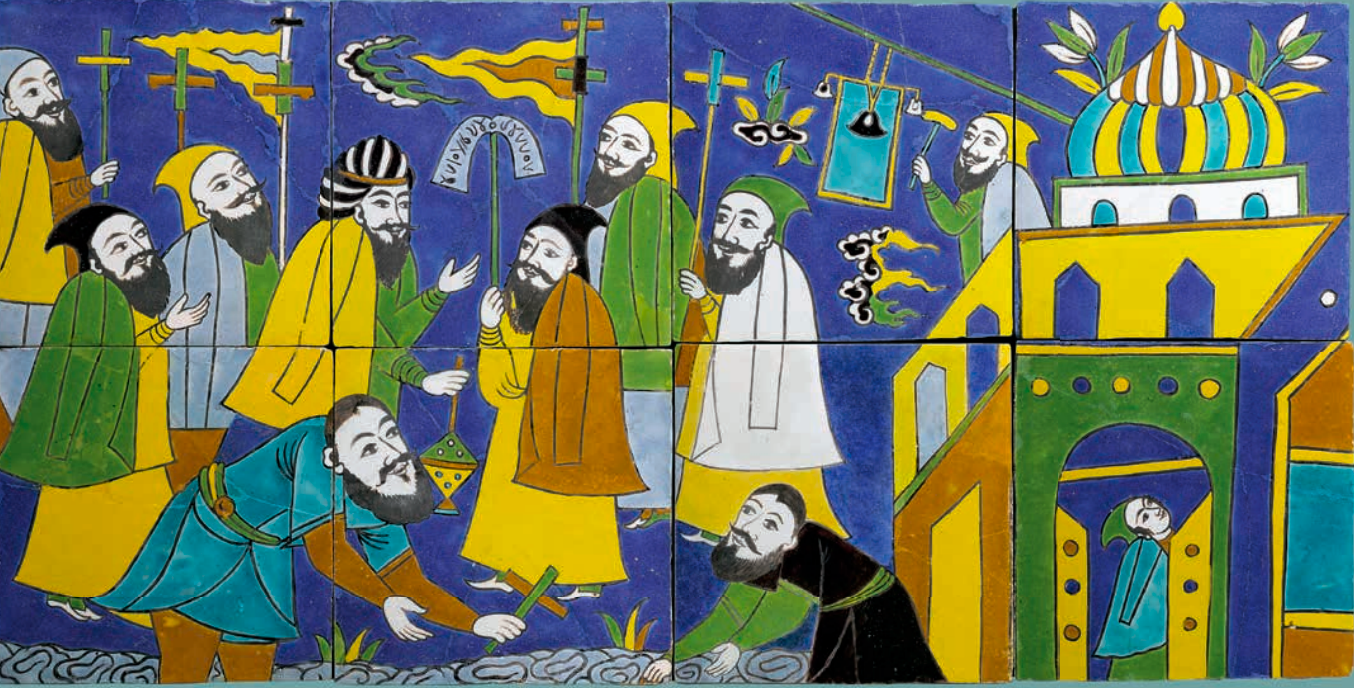

"From Botticelli to Van Gogh: Treasures from the British National Gallery" will be unveiled at the Shanghai Museum on January 17, 2023. On the evening of December 22, at the People's Square in the center of Shanghai, the Shanghai Museum dismantled the South Gate again, in order to bring in the large-scale paintings of Turner and other famous artists who came from the UK.
The Paper learned that the first time Shanghai Bo opened the door for the exhibition was in 2017. At that time, the ancient murals in the Shanxi Museum had to be opened because the size was too large.
It is reported that the exhibits of "From Botticelli to Van Gogh: Treasures from the British National Gallery" will arrive at the Shanghai Museum in seven batches. On the night of December 22, two batches of 19 paintings arrived. Among them, Damiano Mazza's "The Captivity of Ganymede", Joachim Bourkelear's "Four Elements: Fire", Thomas Gainsborough's "Dr. Ralph Schomberg", Due to the large size of the four paintings of "The Farewell of Hero and Leander", Shanghai Bo needs to disassemble them and "let" them into the museum.

Damiano Mazza, The Captivity of Ganymede

Thomas Gainsborough, Doctor Ralph Schomberg
At 8 o'clock in the evening on December 22, amidst the chants of all the staff, the carefully packed paintings were carefully removed from the transport vehicle, placed firmly on the cart, and slowly passed through the dismantled south gate. Pushed into the museum, and the largest piece of work even needs to be laid flat, pushed into the museum and then stood upright. According to the staff of the exhibition department of the Shanghai Museum, in order to avoid bumps and damage to the paintings during transportation, they must be placed stably. Several of the paintings were too large, so the Shanghai Museum had to dismantle the south gate for transport.

The Shanghai Museum dismantles the south gate and carries the exhibits of the National Gallery of England (on-site photo: photo by Ji Qinyuan and Chen Zhiyuan)

Shanghai Museum dismantles the South Gate to move exhibits from the National Gallery

Shanghai Museum dismantles the South Gate to move exhibits from the National Gallery

Shanghai Museum dismantles the South Gate to move exhibits from the National Gallery

Shanghai Museum dismantles the South Gate to move exhibits from the National Gallery

Shanghai Museum dismantles the South Gate to move exhibits from the National Gallery
"From Botticelli to Van Gogh: Collections of the British National Gallery" will exhibit a total of 52 oil paintings, covering Botticelli, Raphael, Titian, Gosset, Caravaggio, Rembert Important works of art giants such as Lang, Claude, Constable, Cézanne, Manet, Monet and Van Gogh. The heavyweight works on display include Botticelli's "Three Miracles of St. Zenobius", Raphael's "Madonna and Child with St. John the Baptist", Titian's "Portrait of a Woman", Remberg Long's "Self-Portrait" and Van Gogh's "Long Grass and Butterfly". Among them, Van Gogh's "Long Grass and Butterflies", which the audience is most familiar with and expects, will arrive in Shanghai in the last batch.
Chu Xin, the Chinese curator of the exhibition and deputy director of the Shanghai Museum’s Exhibition Department, previously told the reporter of The Paper Art Review that the final selection of the 52 exhibits went through a long and friendly game process. The final presentation will be a condensed and quintessential Western art history, which is also a miniature version of the British National Gallery. "I hope that through this high-level and high-standard exhibition, the audience can have a real and face-to-face viewing opportunity with the artists and their works in art history textbooks."

Turner's "The Parting of Hero and Leander"
One of the exhibits arriving in Shanghai tonight, "The Farewell of Hero and Leander" is an oil painting by the famous British artist Turner. "The Parting of Hero and Leander" was written before 1837, and the theme comes from the most famous love poem "Hero and Leander" by the ancient Greek writer and poet Museos. Hero is the priestess of Aphrodite. Leander swims across the Dardanelles to meet Hero every night, and Hero uses a torch to guide Leander every night. On a stormy night, the guiding torch was blown out by the storm, Leander was lost and drowned, and Hailuo jumped into the sea with grief.
Turner broke with the tradition of history painting, which required the main figure to be at or near the center of the frame, and the lovers were not the largest figures in the painting. They were all but hidden in the shadows by the water's edge as Leander prepared to leave. On the platform above them, winged Cupid throws his bow and quiver to the ground and holds a lamp and a torch. Around them, Turner constructed an imaginary location with various classical architectural elements, sweeping staircases and massive mosaic floors. On the right, an exotic "Moorish" tower representing Abydos on the Turkish coast, just behind the huge, jagged rocks on which ghostly sea nymphs gather.
As Turner puts it, the night is ending because "love lingers." Although dawn had just broken, a crescent moon was still clearly visible in the turbulent blue-black sky. Turner intensifies the drama of the scene with darkness and deep shadows, perhaps hinting at impending tragedy. Because Leander left Hailuo and never came back.

The Four Elements: Fire by Joachim Bookler
The author of "Four Elements: Fire" is Joachim Bookler, a Flemish painter who mainly depicts various food and daily necessities in kitchens and markets, and often combines Bible stories as the setting. He was an important influence on the development of market and kitchen scene genres in Nordic and Italian still lifes. Before the 16th century, most of the space in the picture was occupied by religious or mythological scenes, and everyday objects usually only appeared as collocations. However, Joachim Bukler seems to have deliberately reversed the priority. He left the center of the picture for the daily still life, making the main part seem to overflow the picture, and is about to invade the space where the audience is.
In order to cooperate with the exhibition, the Shanghai Museum has actively sought the official authorization of the digital collection of the National Gallery of England. Since mid-December, 34 limited-edition digital collections will be launched on the "Sea Museum" platform, including Monet's "Iris", Vatican Gao's "Long Grass and Butterflies", Rembrandt's "Self-Portrait at the Age of 63", Botticelli's "The Three Miracles of Saint Zenobius", and 24 paintings by Raphael, Michelangelo, etc. . In addition, Turner's "The Battleship Dreadnought Being Dragged to Disintegration", Van Gogh's "Sunflowers", Jan van Eyck's "Portrait of the Arnolfini Couple" and other masterpieces that did not "visit" Shanghai in person are also on display. Among them, to enrich the audience's viewing vision and collection content. Visitors can download the "Museum at Sea" APP on their mobile phones, or follow the WeChat official account of the Shanghai Museum to purchase it.
(Note: At present, exhibition ticket visitors can purchase exhibition tickets through the official channels of the Shanghai Museum (WeChat public account: Shanghai Museum) and online platforms such as Damai, Ctrip, and Meituan. After purchasing tickets, they must make a real-name reservation in the Shanghai Museum’s official reservation system .)


